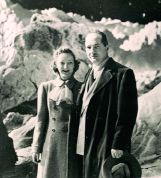Rocketship Galileo is the story of three teenagers who make up the Galileo science club. Through a combination of happenstance and connections, the trio gets hooked up with a pioneering ex-professor who has a plan for a rocketship that will go to the moon. (Funny that rocketship is not accepted by spell-check--fifty years ago it would have been, except for the non-existence of spell-check at that time--two ships that never did pass in the night.)
The tone of the book is very much "Hardy Boys Go to the Moon" but with a didactic science backdrop. The teachable moments, when the professor would teach and/or quiz the boys on technology, mathematics, astronomy, computer science (!), physics, electronics, welding, and materials science, were a bit dry. The basic science was solid, but the implications for technology, computers, and space travel were hilariously out of date. At least within the context of the book, however, there is scientific consistency. The biggest boner was that no mention was made of the tendency of objects to burn to a cinder when they pass into or out of Earth's atmosphere. The team's ship had no heat shields and took off as a nuclear jet plane and just flew off into space from the New Mexico desert.
 |
| Robert and Virginia Heinlein on the set of Destination Moon in 1949; the film was based on his novel Rocketship Galileo. |
Rocketship started slow--the early scene-setting was tedious and did not have enough tiny hints to indicate that something exciting was about to happen. The boys end up traveling with the professor to a camp at, yes, ground zero at Alamagordo, where the first large-scale nuclear test occurred in 1945. Our team of unlikelies were in New Mexico to build a nuclear rocketship. Nuclear power is like a cloud of question marks to the book's characters. The characters express horror and sadness over the way nuclear power was introduced to the world--Hiroshima and Nagasaki. They are determined to find productive uses for this schizo-wunderkind of science. The aftereffects of radiation, genetic damage, long-term poisoning of test sites, these are not yet or bad-dreamed of--although nuclear terrorism is seriously discussed among the professor and the boys.
 |
| Alamagordo, New Mexico: Now am I become death. |
 |
| A comic book knocking the stuffing out of a Nazi--and this is from 1980! |
Now we've gotten so apologist about everything. I've forgotten how fun it was to have an evil enemy to fool, outsmart, trip, spit on, shoot, toss into precipices, and be righteously superior to. Please note that I have grown out of this black/white vision of the world, but it sure made things easier. And, it puts this book in the context of many of the books on my list that develop a dehumanized enemy to allow the "good" characters to justify their "courage." I'm thinking particularly of the Redwall books now. Even Narnia somewhat dehumanizes the enemies to make them hurtable.
| Culture of science wet dream of the 1950s |
Was Rocketship Galileo a hero journey? The boys evidenced some degree of maturation, but this book was not much of a hero journey--more of a thrill ride. The boys were pretty much fully formed from the start. Still, there is a 1950-esque version of the hero journey--the mastering of technology to find wealth and fame. But the tone of this book (if not the action) doesn't support this myth well either. I'll stick with the "thrill-ride with scientific pretentions" idea.
One last observation: My enthusiasm about this book points out to me that I am not just a nerd; I am also a geek.
Sidebar: Destination Moon
Here is a link to the trailer for the movie "Destination Moon," released in 1950 as an adaptation of Rocketship Galileo: http://www.imdb.com/video/screenplay/vi3181445401/ |
| The professor and "the boys" in the 1950 film adaptation of thebook, released as "Destination Moon" |
Here is some dialogue from the IMDb site that takes place nowhere in the book and is way more rah-rah industry than the book is. Propagandists had clearly gotten involved.
[Why the government isn't involved if it's so important]
Jim Barnes: Here's the reason. The vast amount of brains, talents, special skills, and research facilities necessary for this project are not in the government, nor can they be mobilized by the government in peacetime without fatal delay. Only American industry can do this job. And American industry must get to work, now, just as we did in the last war!
Industrialist: Yes, but the government footed the bill!
Jim Barnes: And they'll foot this bill, too, if we're successful; you know that. If we fail, we'll take a colossal beating. So we can't fail! Not only is this the greatest adventure awaiting mankind, but it's the greatest challenge ever hurled at American industry. And General Thayer is going to tell you why.
General Thayer: The reason is quite simple. We are not the only ones who know that the Moon can be reached. We're not the only ones who are planning to go there. The race is on - and we'd better win it, because there is absolutely no way to stop an attack from outer space. The first country that can use the Moon for the launching of missiles... will control the Earth. That, gentlemen, is the most important military fact of this century.
I'd like to note that science fiction/fantasy is loaded with sexism and dehumanization of the enemy. Even Peter Jackson is guilty of these (according to me) infractions. Speaking of Jackson, he also violated my personal end it when it ends rule. It should have ended when the ship left the gray havens, Peter. Really. Fortunately, with the DVD I can stop it whenever I want!
ReplyDeleteLove you, Peter. Now that you've made The Hobbit, how about doing the Tom Bombadil story with Johnny Depp in the lead?
ReplyDelete